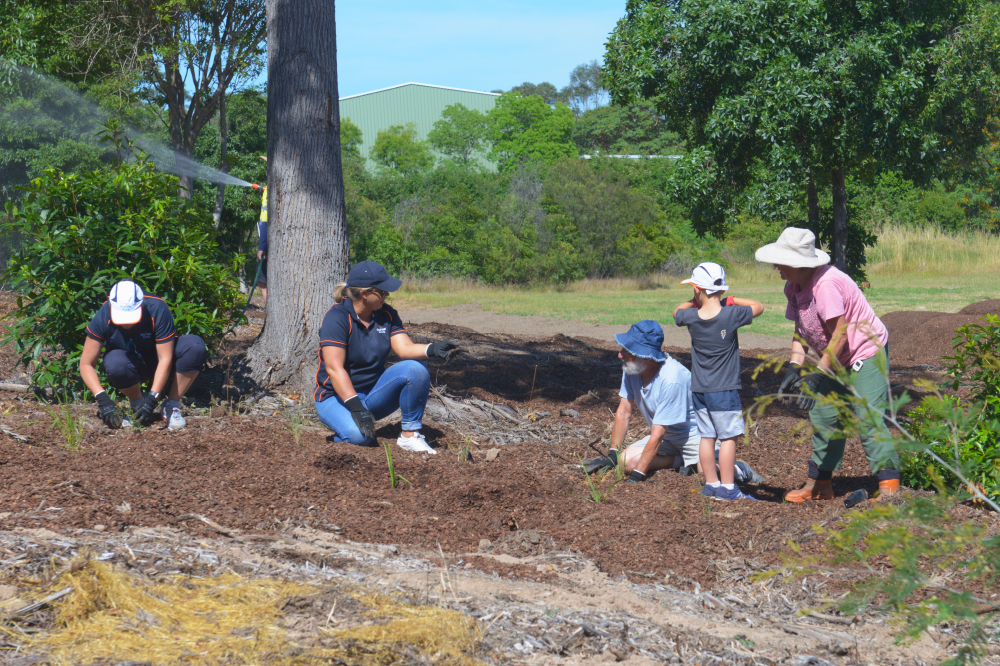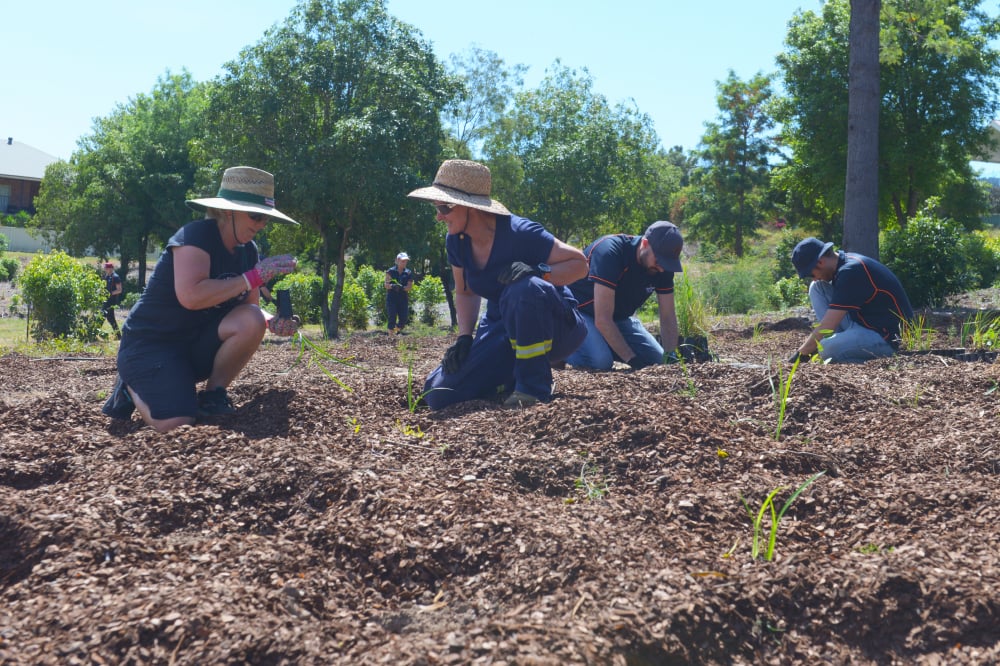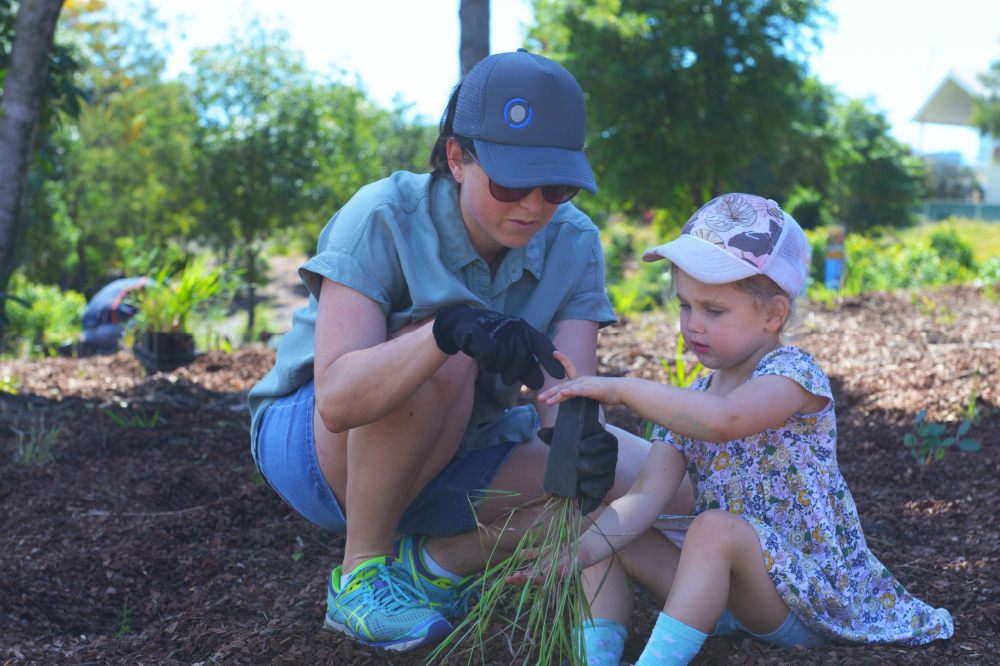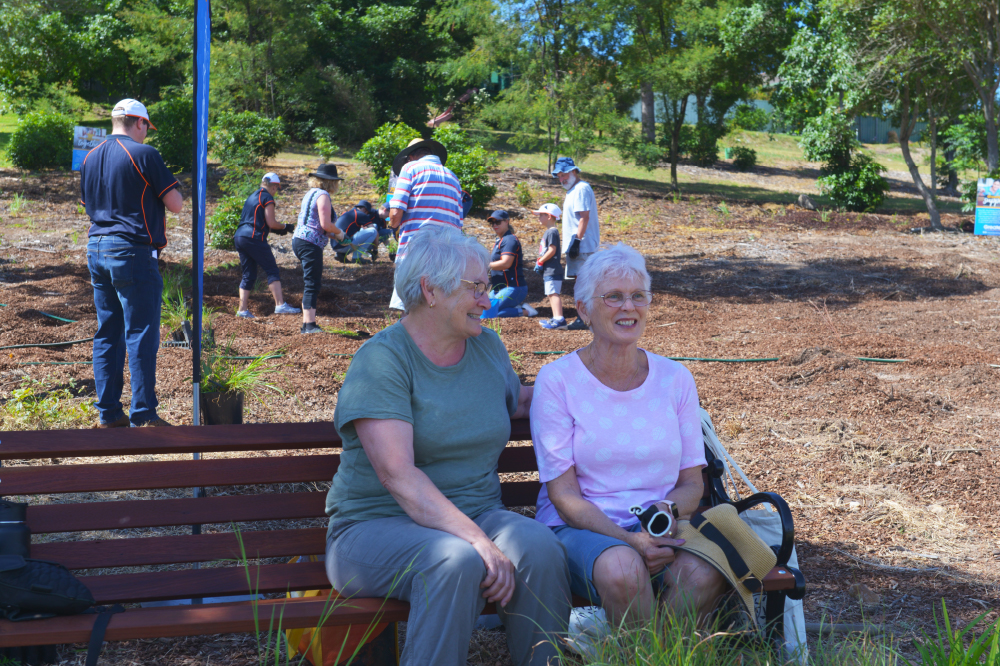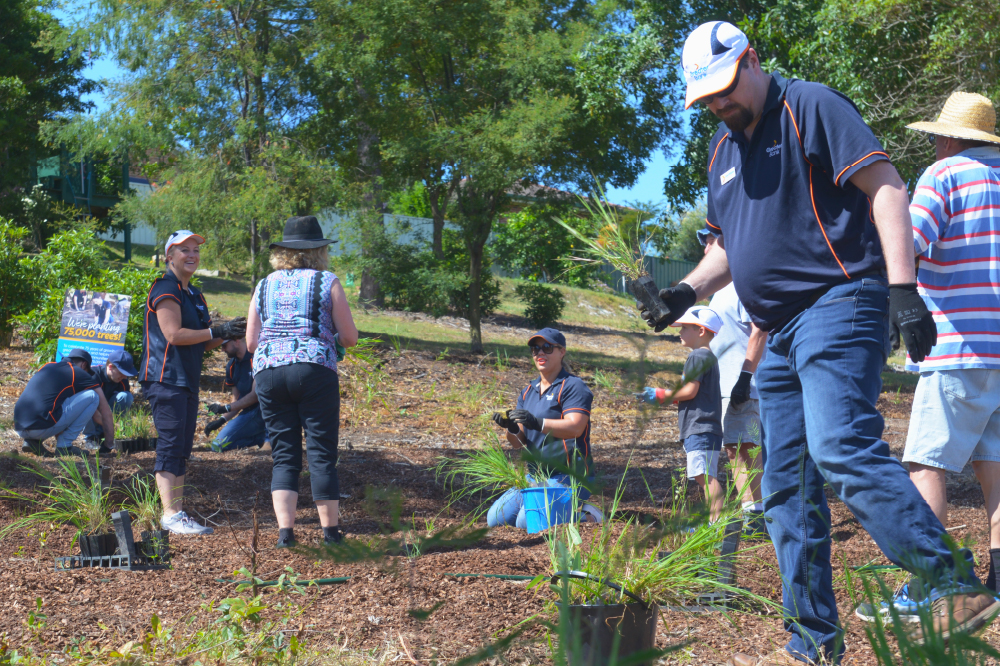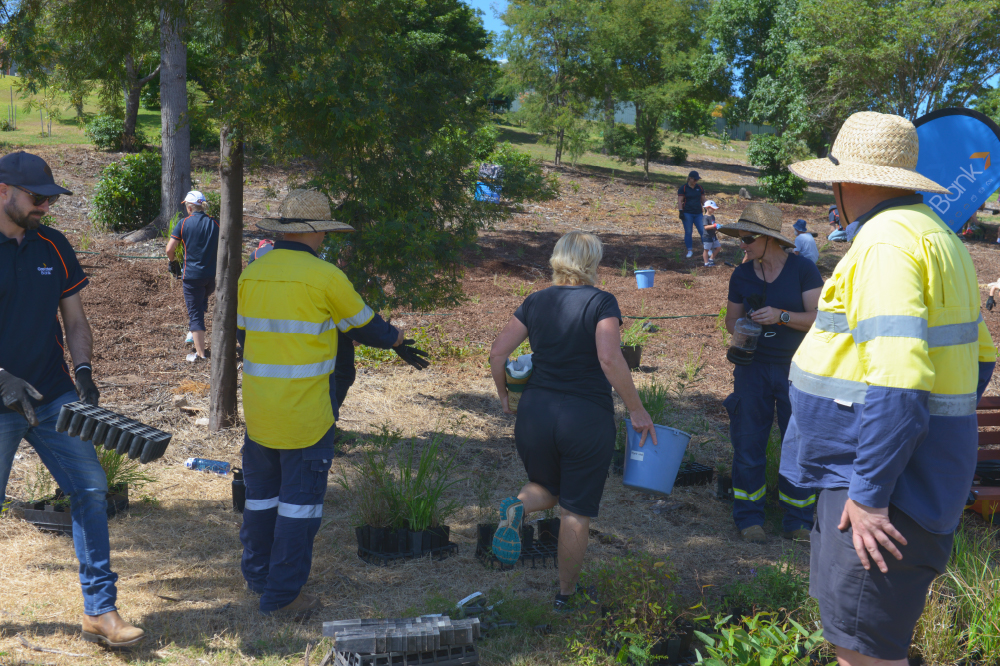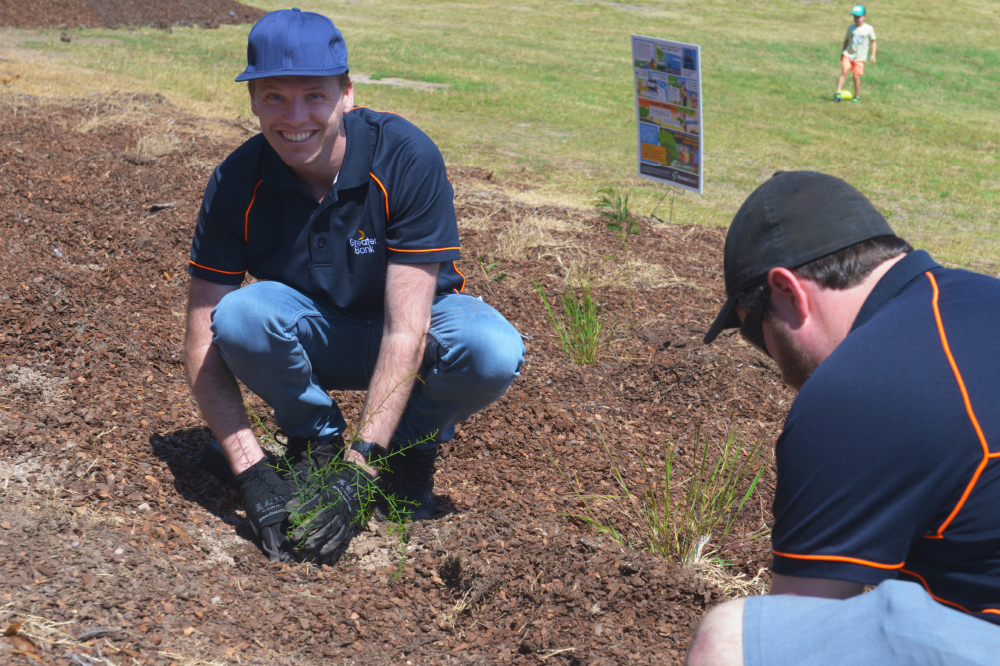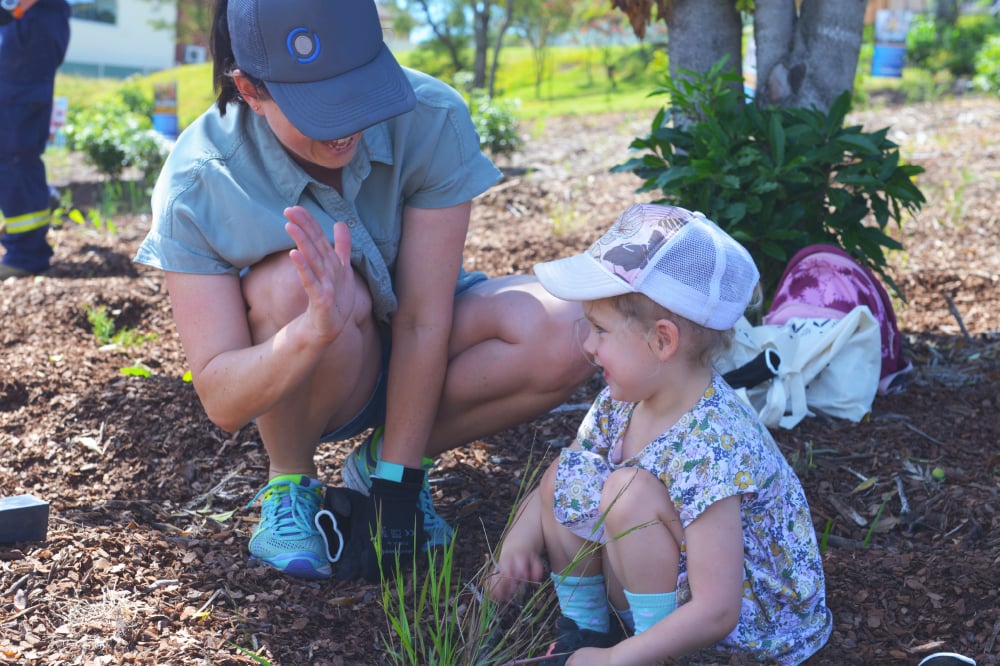
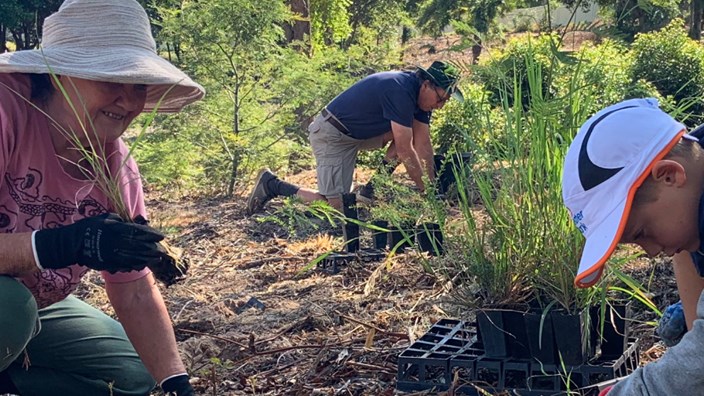
Bakers Brickyard, Raworth
This project aimed to restore the vegetation to the original vegetation community that would have been present at the site. These plants attract birds and other wildlife to the area and provide a food source and habitat for native species. Greater Bank donated 6,000 plants for this project!
Raworth Planting Project: COMPLETED
This vegetation community (Lower Hunter Spotted Gum-Ironbark Forest) is an endangered ecological community (EEC) which has declined to 10% of its original extent. The remaining areas are small and highly fragmented occurring mostly as small patches of less than 10 hectares 6,000 plants including trees, shrubs, herbs, grasses, groundcovers and climbers were planted at the site.
Planting dates: October 2020
Types of Plants
Billardiera scandens – Apple Berry. Evergreen climber, light green leaves with greenish yellow bell flowers most of the year. Suits moist, well-drained soil. Tolerates frost and light snow. This climber will feed birds, butterflies love to drink its nectar, and skinks eat its soft fruits.
Glycine clandestina – Twining Glycine. Slender hairy twiner with clusters of small mauve to purple Wisteria-like flowers in spring. Requires moist, protected situation. Tolerates dryness and light frost. Produces a small pea pod fruits.
Hardenbergia violacea – Purple Coral pea. An extremely hardy Australian Native creeper or ground cover which will grow in sun or shade. Blooms profusely in Spring with spikes of Purple flowers. Drought and frost hardy.
Cymbopogon refractus – Barbed Wire Grass. Perennial warm season grass, grows to 300mm with flower heads arching to 1m high. Very tolerant of low nutrient and dry sites such as eroded areas, quarries and mines with rocky, skeletal substrates without topsoil.
Entolasia stricta – Wiry Panic. Perennial grass forming loose tufts up to 50cm tall. Useful grass for open forest situations. Excellent habitat and food source for wildlife.
Microlaena stipoides – Weeping Grass. Excellent low growing (10cm) perennial grass with a spreading rhizome. Grows well in shade or sun in moist soils. Useful pasture or lawn grass. Frost and moderately good habitat and food source (seed) for native birds.
Themeda australis – Kangaroo Grass. Hardy native grass to 1m high. Suited for decorative features in gardens or as native pasture. Tolerates drought, frost and fire. Particularly suited to hard dry soils but will thrive in almost all soils.
Dianella caerulea – Paroo Lily. Hardy clump forming plant. Grows to 75cm tall x 30cm wide. Sprays of star
shaped blue flowers in summer are followed by brilliant blue berries which provide food for wildlife. Frost and drought hardy. Sun or part shade. Most soils.
Dianella revolutum – Flax Lily - A robust spreading tufted perennial with strap-like leaves Blue flowers and blue berries carried on graceful arching stems above the foliage. Leaves grow to about 30cms tall. Suits full sun and well drained soils. Usually frost and drought hardy.
Lomandra multiflora. A very attractive species forming a dome of soft weeping foliage and spikes of yellowish bell shaped flowers. Very hardy, needs good drainage but performs well in most soils including heavy clay. Will grow in full sun or part shade aspects. Grows 20-50cm high.
Breynia oblongifolia – Coffee Bush. Tall shrub to 4m with graceful arching branches, greenish flowers and bright red bird attracting fruit. Responds well to pruning. Frost and drought hardy when established. Well drained site in light shade or full sun. Good for erosion control. This plant also supports many different animals that feed on leaves, berries and flowers.
Bursaria spinosa – Blackthorn. A very bushy shrub if grown in the open with dense clusters of sweetly perfumed white flowers in mid-summer followed by red seed capsules. A very attractive shrub for dry, sunny well drained sites. Soft, fine thorns along all stems provide a protective habitat for little birds.
Daviesia ulicifolia – Gorse Bitter Pea. Small prickly shrub 1–1.5m high. Pea shaped orange/yellow or yellow/brown flowers. Will grow in most soils and climactic conditions. Excellent refuge for small wildlife.
Grevillea montana – An excellent plant for attracting bird life. Needs well drained soils in full sun or semi shade. Attractive red and green flowers in mass in spring. Grows to 1.5m high and 2m wide. Drought and frost hardy. Provides nectar for birds such as honeyeaters and insects. Parrots and rosellas feed on the seeds. Attracts insects which small birds like wrens will feed on.
Ozothamnus diosmifolius – Sago Bush. Erect open shrub growing to 2m. Leaves have quite a strong smell. It produces large flower heads to 7 cm in diameter of white or cream or pink flowers in spring, summer and autumn. Long lasting cut flower.
Acacia parvipinnula – Silver Stemmed Wattle. Large shrub or small tree 2.5–10m high. Silvery bark, dense racemes of fragrant flowers, favoured by sugar gliders. Grows in a variety of well drained soils. Frost and drought hardy.
Melaleuca nodosa – Prickly Paperbark. Dense shrub with narrow leaves. Lemon/yellow flowers cover bush in spring. Grows 2m x 1.5m in a sunny moist situation. Hardy and quick growing can be pruned to shape.
Corymbia maculata – Spotted Gum. Tall tree to 45m with smooth bark which is powdery, grey/pink/white often spotted. Autumn flowering with high yield of nectar which is fed on by birds and mammals.
Eucalyptus fibrosa – Broad-leaved Ironbark. Tall tree to 35m with persistent bark and broad leaves.
Eucalyptus crebra – Narrow-leaved Ironbark. Tall tree to 35m with persistent grey-black ‘ironbark’. Produces clusters of white flowers which are heavy in nectar and pollen for feeding insects, birds and mammals.
Eucalyptus punctata – Grey Gum. Tree to 35m with smooth patchy bark grey/white/salmon. Will provide habitat and food for a variety of animals and its leaves are regarded as one of the favourites of the koala.

